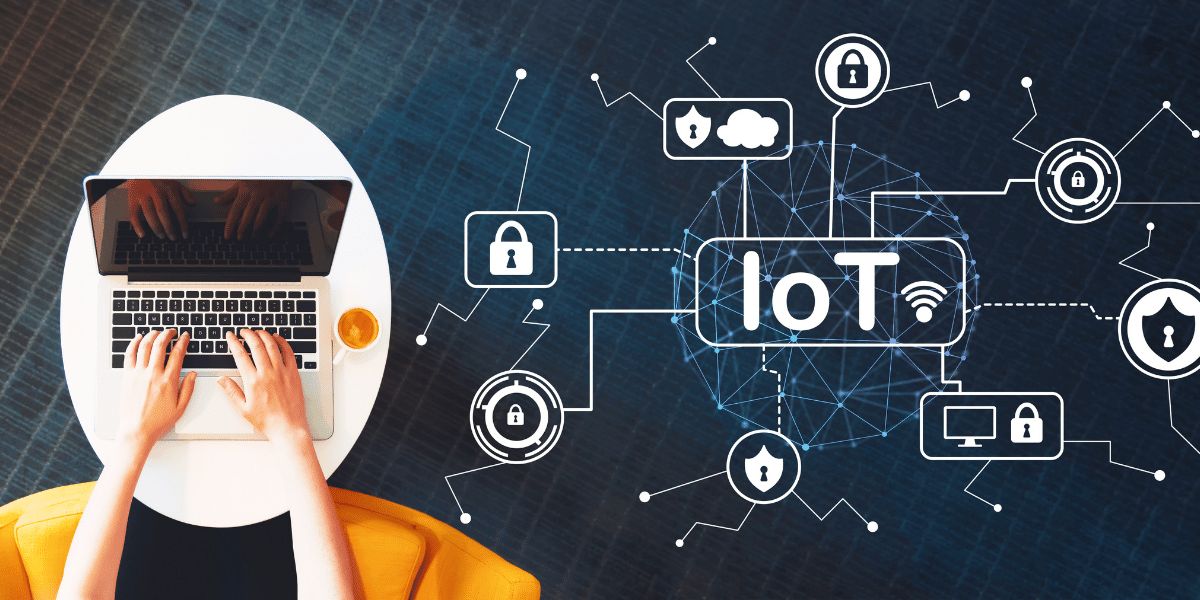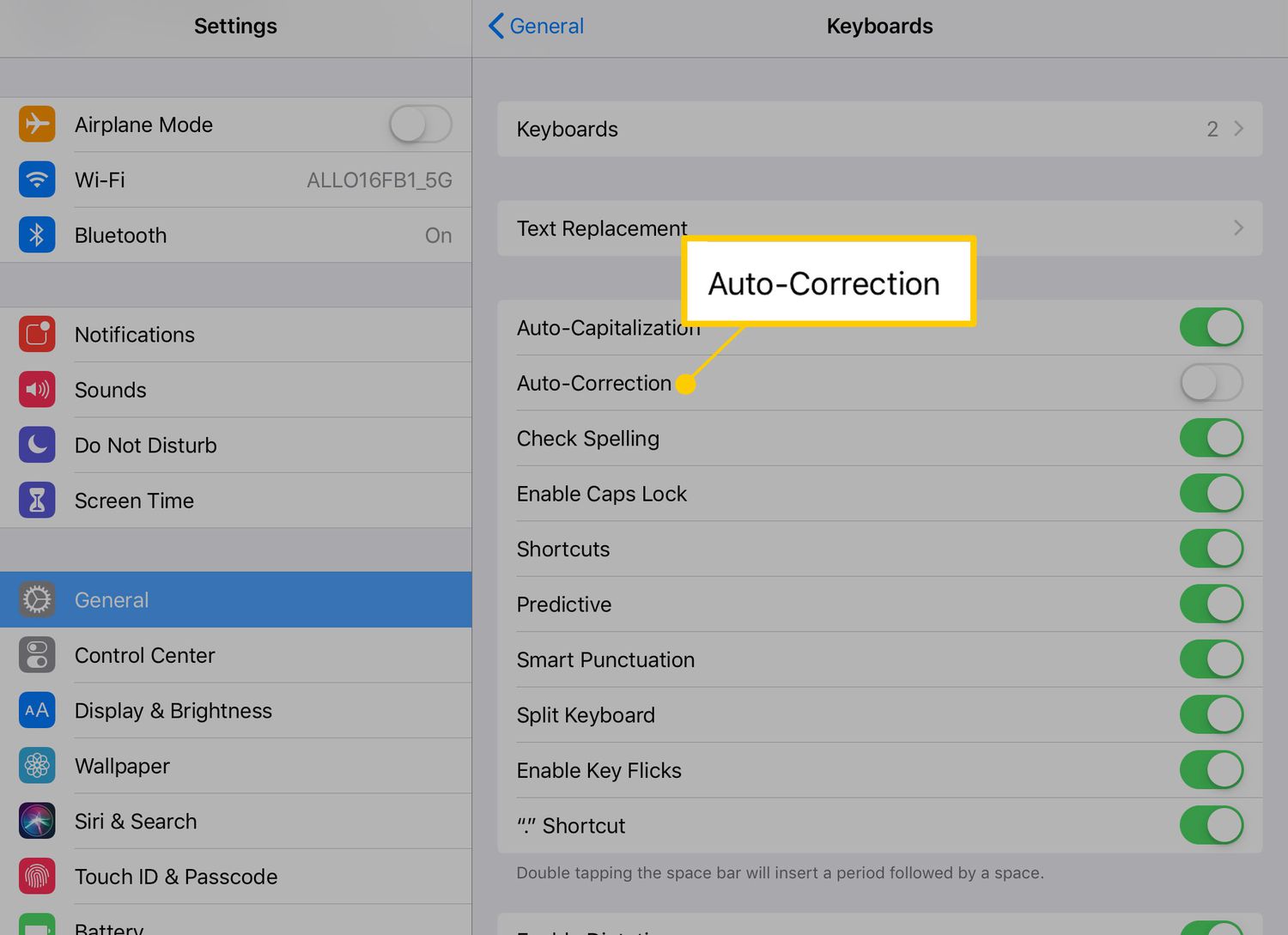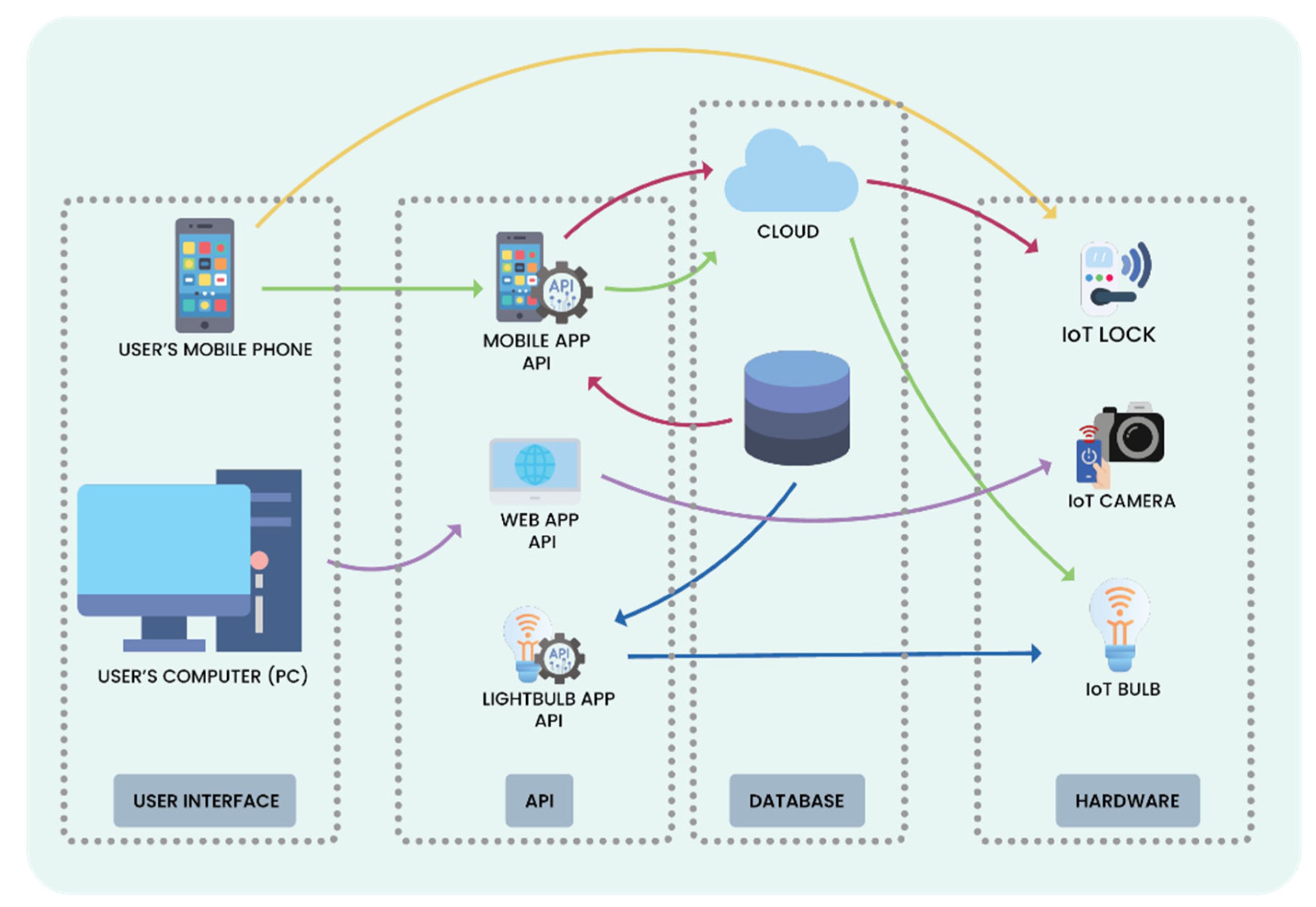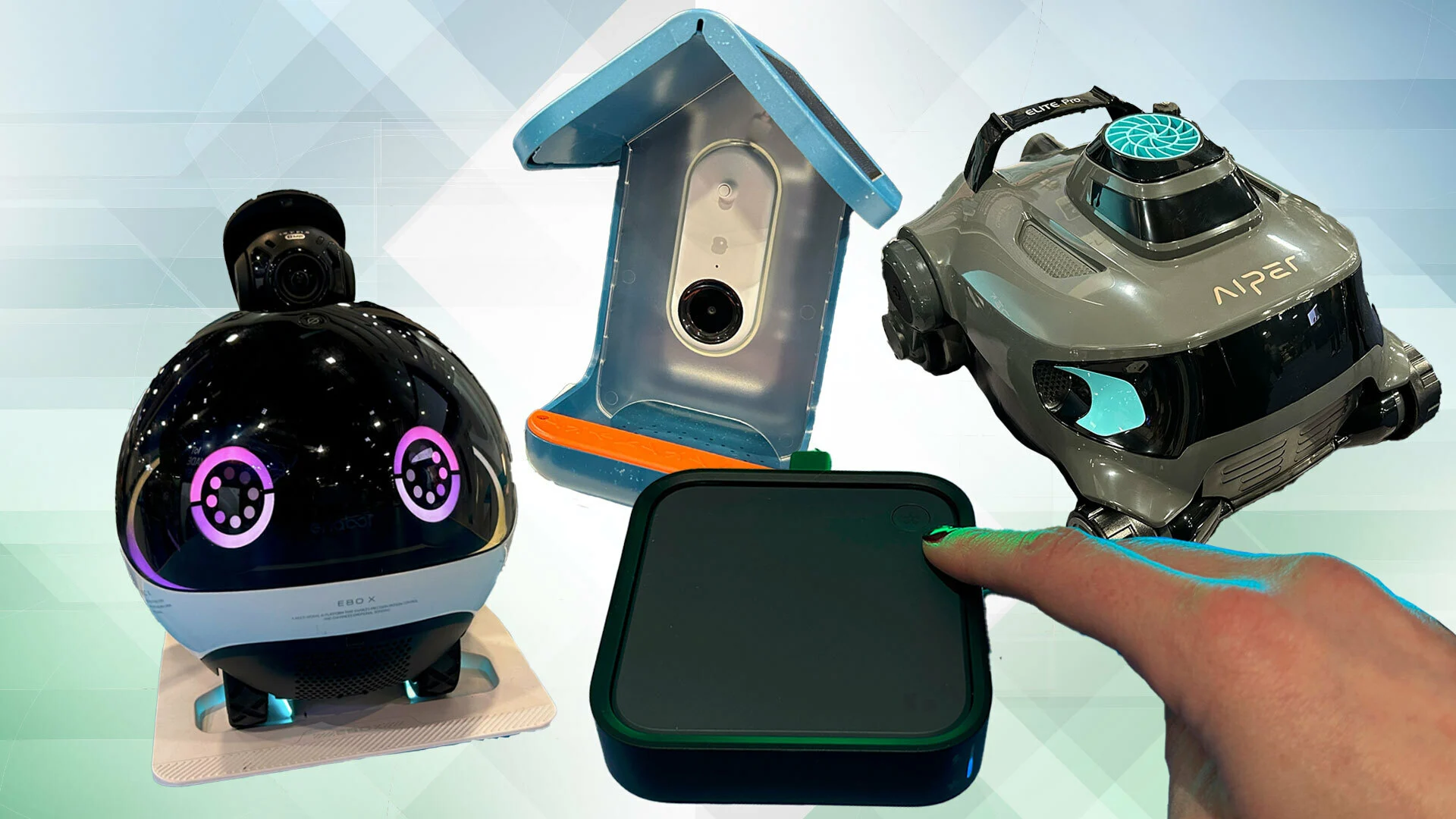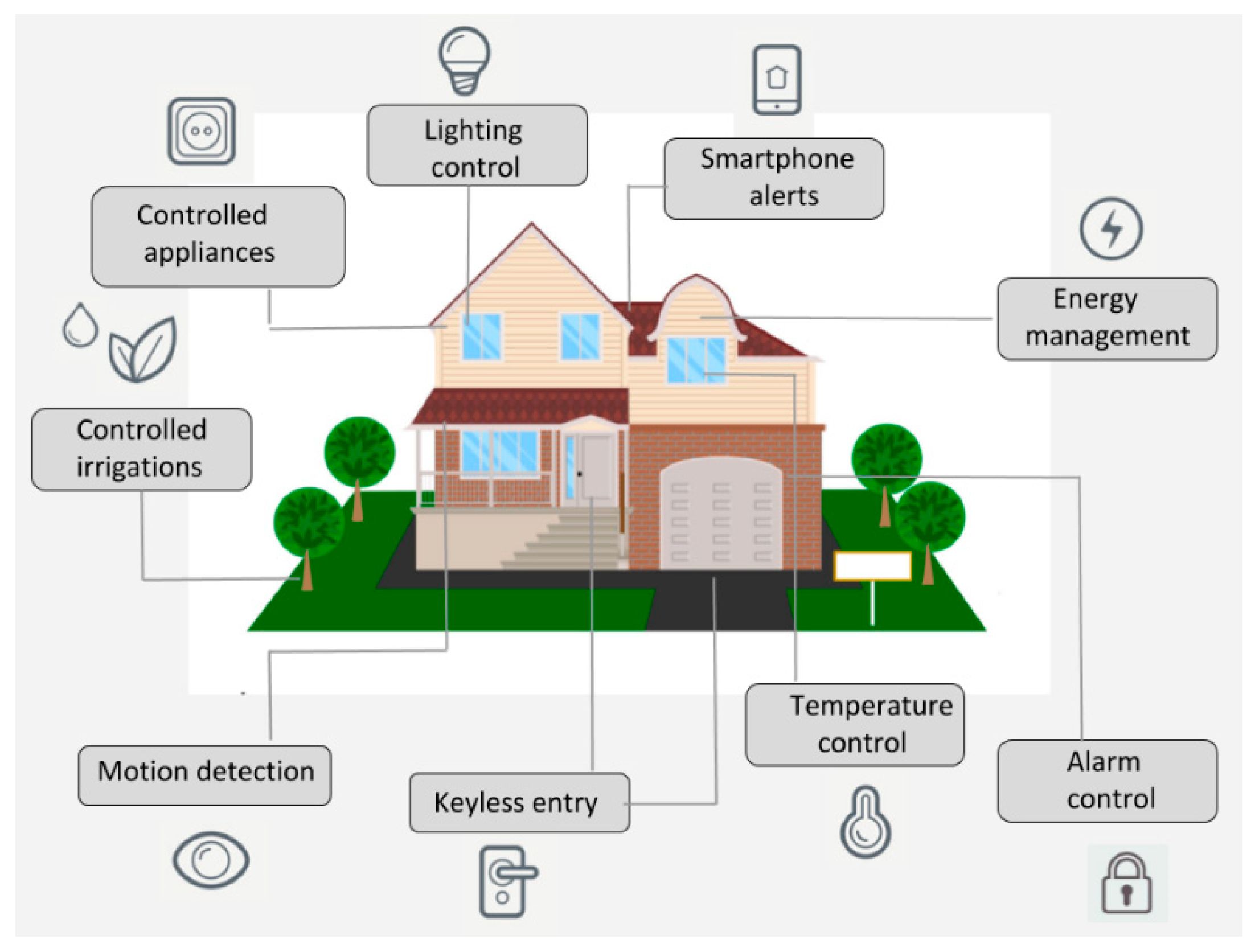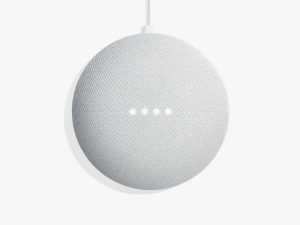What Is IoT Technology?
IoT, or the Internet of Things, refers to the connection of everyday objects to the internet, enabling them to send and receive data. These objects, often equipped with sensors and actuators, can collect and exchange information, allowing for seamless communication between humans, machines, and the environment. The main goal of IoT technology is to create a network of interconnected devices that can enhance efficiency, convenience, and automation in various domains.
One of the key features of IoT technology is its ability to gather real-time data from multiple sources. For instance, IoT devices in a smart home can collect data about energy usage, temperature, and security status, which can then be analyzed and used to optimize resource consumption and improve overall comfort. Similarly, IoT sensors in manufacturing facilities can monitor equipment performance and detect potential failures, leading to preventive maintenance and reducing downtime.
The concept of IoT technology extends beyond homes and factories, reaching sectors such as healthcare, transportation, agriculture, and smart cities. In healthcare, IoT devices can track vital signs remotely, transmit patient information to healthcare providers, and enable telemedicine, thus improving access to care and patient outcomes. In transportation, IoT enables connected vehicles that can communicate with each other and with infrastructure, leading to enhanced safety, traffic management, and fuel efficiency.
In agriculture, IoT technology can provide farmers with valuable insights into soil moisture, temperature, and crop health, allowing for optimized irrigation and pest control. In smart cities, IoT devices can monitor air quality, manage waste disposal, and optimize energy consumption, contributing to a more sustainable and livable urban environment.
Overall, IoT technology is revolutionizing the way we interact with our physical surroundings. By leveraging the power of connectivity and data analysis, it has the potential to transform industries, improve decision-making processes, and enhance the overall quality of life.
How Does IoT Work?
IoT operates through a network of interconnected devices that communicate with each other to gather and share data. The process can be broken down into four main components: sensors, connectivity, data processing, and actuators.
The first component, sensors, is at the heart of IoT technology. These small devices are responsible for collecting data from the physical environment. They can measure various parameters such as temperature, humidity, light intensity, motion, and more. Sensors can be embedded in different objects, including appliances, vehicles, wearables, and infrastructure, and they play a crucial role in capturing real-time information.
The second component, connectivity, enables the transfer of data between devices. This is usually achieved through wireless communication technologies such as Wi-Fi, Bluetooth, Zigbee, or cellular networks. The choice of connectivity depends on factors such as range, power consumption, and data transfer speed. The development of low-power and low-cost communication protocols has significantly contributed to the growth of IoT, allowing for seamless connectivity between devices.
Once the data is collected by the sensors and transferred through the network, it needs to be processed and analyzed. This is where the third component, data processing, comes into play. The collected data is typically sent to a cloud-based platform or a local server, where it is stored and analyzed. Advanced data analytics techniques such as machine learning and artificial intelligence can be applied to extract valuable insights from the data, enabling informed decision-making and automation.
The final component, actuators, represents the devices or systems that perform actions based on the analyzed data. These can include switches, motors, robots, displays, or any device that can execute commands. For example, in a smart home, actuators can control the temperature, lighting, or security system based on the data received from the sensors and processed by the cloud platform.
Overall, IoT technology relies on the seamless integration of sensors, connectivity, data processing, and actuators to enable the collection, analysis, and response to data from the physical world. It is this interconnected ecosystem that allows for the automation, optimization, and improved efficiency that IoT promises in various domains.
Important Components of IoT
IoT technology encompasses various key components that work together to create a connected ecosystem. Understanding these components is crucial for effectively implementing and leveraging the potential of IoT in different applications.
1. Sensors and Actuators: Sensors are the backbone of IoT systems as they collect data from the physical environment. They can monitor temperature, pressure, light, sound, motion, and more. Actuators, on the other hand, are responsible for performing actions based on the data collected by the sensors. They can control switches, motors, and other devices.
2. Connectivity: Reliable and secure connectivity is essential for IoT devices to communicate with each other and transfer data. Various wireless technologies, such as Wi-Fi, Bluetooth, Zigbee, and cellular networks, enable seamless connectivity in IoT networks.
3. Data Processing and Analytics: IoT generates vast amounts of data. Data processing platforms, such as cloud-based solutions or edge computing devices, collect and store this data. Analytics tools, including machine learning and AI algorithms, are employed to derive meaningful insights from the collected data.
4. Network Infrastructure: The network infrastructure provides the backbone for IoT connectivity. It includes network switches, gateways, routers, and protocols that facilitate data transmission and ensure a reliable and secure network environment.
5. Security: IoT systems must address security concerns to protect sensitive data and ensure the privacy of users. Robust security measures, including data encryption, authentication mechanisms, and secure communication protocols, are necessary to mitigate potential threats.
6. Cloud Computing: Cloud platforms play a significant role in IoT, offering scalable storage, computational power, and data analytics capabilities. They allow for centralized management of IoT devices, data storage, and remote access to IoT systems.
7. User Interface and Visualization: User interfaces provide an interactive way for users to control and monitor IoT devices and systems. Visualization tools present data in a user-friendly manner, allowing users to make informed decisions based on the insights derived from IoT data.
8. Standards and Protocols: Standardization is crucial for interoperability and compatibility among different IoT devices and systems. Protocols such as MQTT, CoAP, and HTTP enable efficient and standardized communication between devices and platforms.
By considering and integrating these important components, organizations and individuals can harness the full potential of IoT technology, creating intelligent, connected systems that drive innovation and efficiency in various sectors.
Applications of IoT
The applications of IoT technology are vast and extend across various sectors, revolutionizing the way we interact with the world around us. Here are some prominent fields where IoT is making a significant impact:
1. Smart Homes: IoT enables the creation of smart homes, where devices and appliances are connected and can be controlled remotely. From smart thermostats and lighting systems to home security and entertainment systems, IoT technology enhances convenience, energy efficiency, and security within residential spaces.
2. Healthcare: IoT plays a crucial role in healthcare with applications such as remote patient monitoring, wearable devices for tracking vital signs, and smart medication dispensers. These connected devices improve patient care, enable early detection of health issues, and allow for personalized treatment plans.
3. Manufacturing and Industry: IoT technology facilitates the implementation of smart factories and industrial automation. IoT sensors and systems monitor machinery performance, predict maintenance needs, and streamline production processes, leading to increased productivity, reduced downtime, and cost savings.
4. Agriculture: IoT is transforming the agricultural sector with smart farming techniques. IoT devices monitor soil moisture levels, temperature, and crop health, enabling efficient irrigation, pest control, and optimized resource usage. This helps farmers increase crop yields, reduce water waste, and make informed decisions for improved agricultural practices.
5. Transportation: IoT is revolutionizing transportation with connected vehicles and intelligent transport systems. IoT sensors and communication networks enable real-time monitoring of traffic conditions, predictive maintenance of vehicles, and enhanced safety measures, ultimately leading to reduced traffic congestion, accidents, and fuel consumption.
6. Smart Cities: IoT technology is instrumental in building smart cities. Connected sensors monitor air quality, waste management, energy consumption, and traffic patterns, making cities more sustainable, efficient, and livable. Smart parking systems, street lighting, and integrated public transportation are a few examples of IoT-driven solutions in smart cities.
7. Retail and Inventory Management: IoT devices improve inventory management by providing real-time data on stock levels, tracking shipments, and optimizing supply chain processes. This helps retailers reduce costs, streamline operations, and enhance customer satisfaction through improved product availability.
8. Energy Management: IoT enables effective energy management through smart grids and smart meters. Connected devices monitor energy usage, detect faults, and optimize energy distribution, leading to reduced wastage and lower utility costs for both consumers and providers.
These are just a few examples of the wide-ranging applications of IoT technology. As IoT continues to evolve, we can expect even more innovative use cases and transformative impacts in various sectors, improving efficiency, sustainability, and quality of life.
Advantages and Drawbacks of IoT
IoT technology offers numerous advantages that have the potential to transform industries and improve our daily lives. However, it also presents certain drawbacks and challenges that need to be addressed. Let’s explore both the advantages and drawbacks of IoT:
Advantages of IoT:
1. Automation and Efficiency: IoT enables automation of various processes, leading to increased efficiency and productivity. Connected devices can communicate and perform tasks without human intervention, reducing manual effort and streamlining operations.
2. Data-Driven Insights: IoT generates vast amounts of data that can be analyzed to gain valuable insights. These insights help organizations make informed decisions, optimize processes, and identify patterns or trends that would have otherwise gone unnoticed.
3. Improved Quality of Life: IoT technology enhances convenience and comfort in our daily lives. From smart homes with automated controls to wearable devices that monitor health, IoT improves the overall quality of life by providing personalized experiences and services.
4. Cost Savings: IoT-driven automation and efficient resource management contribute to cost savings in various industries. For example, predictive maintenance of machinery reduces downtime and repair costs, while optimized energy usage leads to lower utility bills.
5. Enhanced Decision-Making: IoT data provides real-time insights that enable faster and more accurate decision-making. This is especially beneficial in sectors such as healthcare emergency response or supply chain management, where timely decisions can have a significant impact.
Drawbacks of IoT:
1. Security Risks: IoT devices are vulnerable to cybersecurity threats, raising concerns about data breaches, privacy violations, and potential disruption of critical infrastructure. Robust security measures and regular updates are essential to mitigate these risks.
2. Compatibility and Interoperability: The lack of universal standards and protocols in the IoT ecosystem can lead to compatibility issues. Devices from different manufacturers may not communicate effectively with each other, hindering the seamless integration of IoT solutions.
3. Data Privacy: IoT devices collect and transmit sensitive personal data, raising concerns about privacy. Unauthorized access to this data can result in identity theft or misuse. Stricter regulations and data protection measures are necessary to address these privacy challenges.
4. Complexity and Scalability: Implementing IoT solutions can be complex and resource-intensive. Integration of multiple devices, networks, and platforms requires careful planning and expertise. Scaling IoT deployments to accommodate a large number of devices and users can also pose challenges.
5. Reliability and Stability: IoT systems heavily rely on network connectivity and infrastructure. Any disruptions or failures in connectivity can impact the functionality of IoT devices and undermine the reliability of these systems.
Despite the drawbacks and challenges, the advantages of IoT technology outweigh the drawbacks. With continued advancements in technology and concerted efforts to address the concerns, IoT has the potential to drive innovation, efficiency, and improve the way we live and work.
Security and Privacy Concerns in IoT
While IoT technology offers a host of benefits, it also raises significant concerns regarding security and privacy. The interconnected nature of IoT devices and the massive amount of data they generate present unique challenges that need to be addressed. Let’s delve into some of the major security and privacy concerns in IoT:
1. Cybersecurity Threats: IoT devices are vulnerable to cyber attacks, making them potential entry points for hackers. Weak or default passwords, lack of firmware updates, and unsecured network connections can compromise the security of IoT devices and the data they collect.
2. Data Privacy: IoT devices collect vast amounts of personal data, raising concerns about privacy. This data includes personal information, behavioral patterns, and even sensitive health data in certain applications. Unauthorized access to this data can lead to identity theft, misuse, or unauthorized profiling.
3. Lack of Standardization: The lack of universally accepted security standards and protocols in the IoT ecosystem makes it more challenging to ensure consistent security practices across devices and systems. Different manufacturers may implement varying security measures, leading to inconsistencies and vulnerabilities.
4. Inadequate Device Management: Many IoT devices lack proper management mechanisms, such as centralized control and monitoring. This can make it difficult to ensure that all devices have the necessary security updates and patches, leaving them exposed to potential vulnerabilities.
5. Insider Threats: Insider threats pose a significant risk to IoT security. Malicious or careless employees within an organization may exploit their access privileges to compromise IoT systems or leak sensitive data.
6. Lack of Encryption: Insufficient data encryption in IoT networks can expose sensitive information to interception or unauthorized access. Strong encryption protocols must be implemented to ensure the confidentiality and integrity of data transmitted between IoT devices and platforms.
7. Denial-of-Service (DoS) Attacks: IoT devices can be targeted in DoS attacks, where a network is flooded with traffic, causing interruption of service and rendering the devices inaccessible. Such attacks can disrupt critical IoT systems like healthcare monitoring or industrial automation.
8. Regulatory and Compliance Challenges: Compliance with data protection and privacy regulations becomes more challenging in the IoT environment due to the volume and sensitivity of data being collected. Organizations must navigate complex legal frameworks and ensure sufficient safeguards to protect user data.
To address these concerns, ongoing efforts are being made to enhance IoT security. This includes the development of secure communication protocols, regular security updates, robust authentication mechanisms, and improved user awareness regarding privacy settings and best practices.
As the IoT landscape evolves, it is crucial for manufacturers, organizations, and users to prioritize security and privacy measures to safeguard IoT systems and protect sensitive data. Collaboration between industry stakeholders, government entities, and cybersecurity experts is essential to address these concerns and ensure that the potential benefits of IoT can be fully realized.
The Future of IoT
The future of IoT is incredibly promising, with the potential to reshape industries, improve efficiency, and enhance our everyday lives. As technology advances and connectivity becomes more pervasive, we can expect the following trends and developments in the field of IoT:
1. Expansion of IoT Networks: The number of connected devices is projected to grow exponentially, leading to the expansion of IoT networks. This growth will be driven by advancements in wireless communication technologies, the proliferation of connected devices, and the adoption of IoT solutions across various sectors.
2. Edge Computing: Edge computing, where data is processed closer to the source rather than being sent to the cloud, is set to become more prevalent in IoT systems. This approach reduces latency, minimizes bandwidth requirements, and enhances real-time decision-making, making it ideal for applications that require immediate responses.
3. Artificial Intelligence Integration: IoT will increasingly integrate with artificial intelligence (AI) technologies, enabling devices to make autonomous decisions and perform advanced data analytics. AI algorithms will enhance the ability of IoT systems to detect patterns, predict events, and optimize processes, leading to greater efficiency and improved user experiences.
4. 5G Connectivity: The rollout of 5G networks will revolutionize IoT connectivity by providing ultra-fast, low-latency connections. This will enable more seamless communication between devices, support the massive scale of interconnected devices, and unlock new possibilities for applications that require high bandwidth and real-time responsiveness.
5. Industry-specific Solutions: IoT technology will continue to evolve to cater to specific industries and sectors. Vertical-specific solutions will be developed to address the unique requirements of areas such as healthcare, agriculture, manufacturing, and transportation, leading to more tailored and effective IoT deployments.
6. Enhanced User Experience: IoT devices and systems will focus on delivering seamless and intuitive user experiences. Interoperability and improved integration between devices will result in a smoother transition between different IoT technologies, making it easier for users to adopt and benefit from IoT solutions.
7. Focus on Security and Privacy: As IoT continues to expand, there will be a greater emphasis on addressing security and privacy concerns. This includes the implementation of stronger encryption protocols, improved authentication mechanisms, and enhanced user awareness regarding privacy settings and data protection.
8. Sustainability and Green IoT: IoT will play a key role in driving sustainability efforts. Connected devices can monitor and optimize energy usage, improve waste management, and enable smarter resource consumption, contributing to a more sustainable future.
Overall, the future of IoT holds immense potential for technological advancements, automation, and interconnectedness. With the continued development of innovative solutions, the internet of things will pave the way for a smarter, more efficient, and interconnected world.
Conclusion
IoT technology has emerged as a powerful force that is reshaping industries, revolutionizing our daily lives, and unlocking new possibilities. The ability to connect everyday objects to the internet and exchange data has opened up a world of opportunities for automation, efficiency, and enhanced experiences.
From smart homes and connected cars to healthcare monitoring and industrial automation, IoT technology is making a significant impact across a wide range of sectors. It enables the collection and analysis of real-time data, driving informed decision-making and optimization of processes.
However, along with the numerous advantages, IoT also brings forth certain challenges that cannot be ignored. Security and privacy concerns, in particular, need to be addressed to ensure the trust and integrity of IoT systems. Strong security measures, data encryption, and privacy safeguards are essential to protect sensitive information and mitigate potential threats.
The future of IoT looks incredibly promising. As technology advances, we can expect to see further expansion of IoT networks, integration with artificial intelligence, the rollout of 5G connectivity, and industry-specific solutions that cater to unique requirements. The focus on user experience, sustainability, and enhanced security will drive advancements in IoT technology.
It is important for organizations, manufacturers, governments, and individuals to collaborate and work towards the responsible and ethical development and implementation of IoT technology. By addressing the challenges, embracing innovation, and prioritizing security and privacy, we can fully realize the transformative potential of IoT, creating a more interconnected and efficient world.







